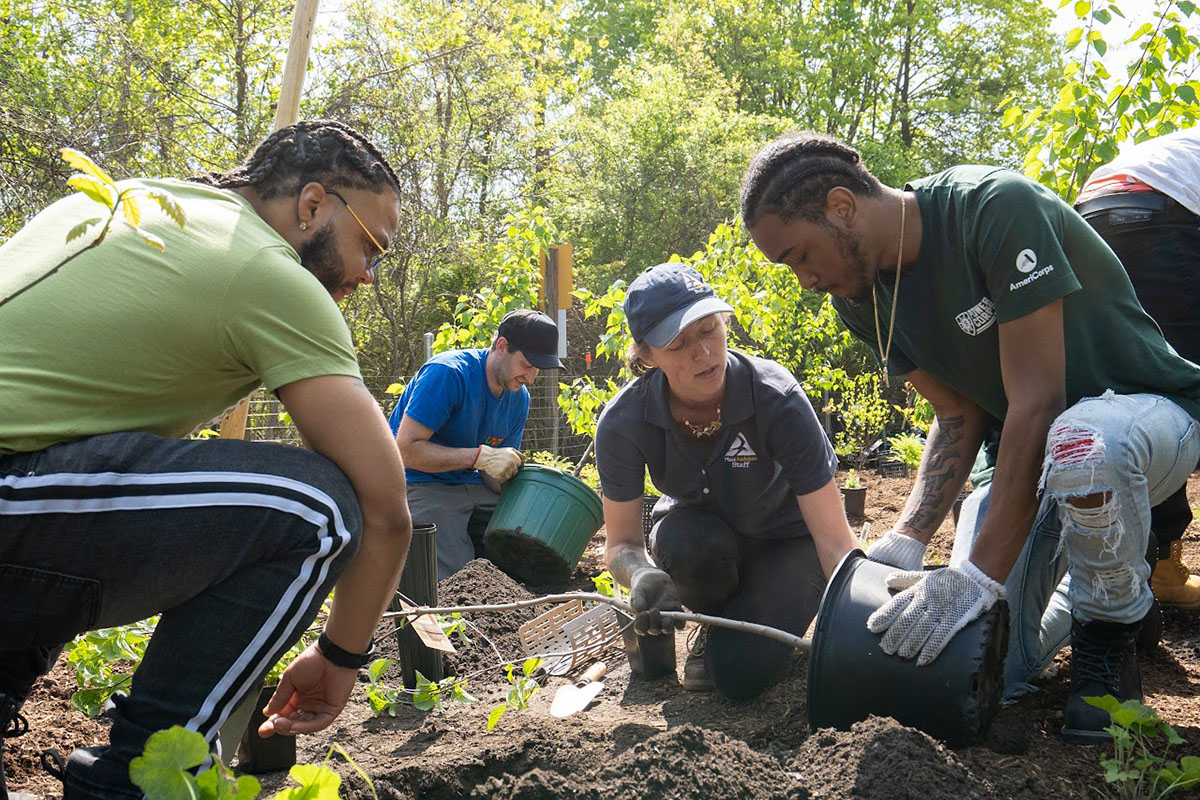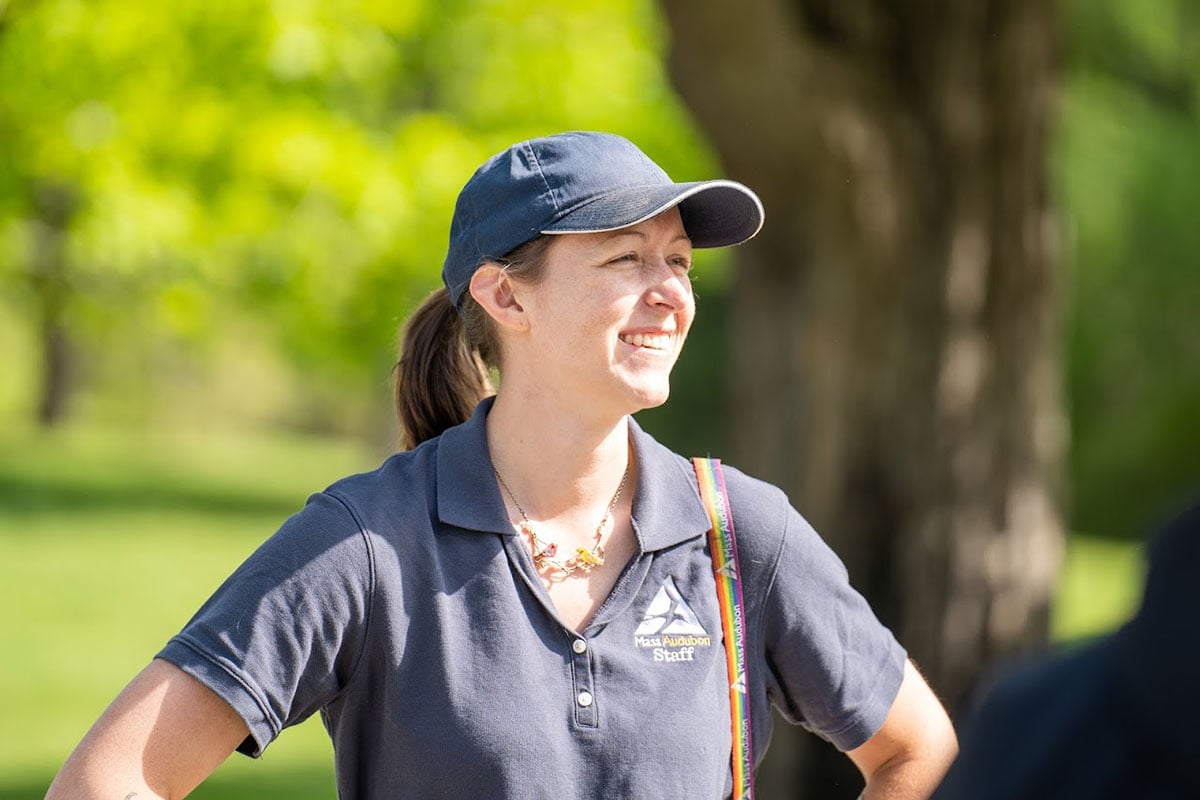In Your Words: Erica Holm
March 26, 2024
As Mass Audubon’s first Urban Ecologist, I’m charged with increasing the intersectionality of conservation work in urban settings. That means looking at the total system of how living things interact with one another and the built environment in densely populated areas and identifying ways to benefit all people and wildlife in Massachusetts.
I started my career in urban forestry in earnest in 2019 when I moved to Boston. Between 2020 and 2022, I worked as the Field Operations Coordinator at the Emerald Necklace Conservancy, managing large urban tree care contracts in one of the largest historic green infrastructure projects in the United States.
In January 2022, I joined Mass Audubon, where I work interdepartmentally to support urban site restoration initiatives, provide the latest in urban ecological research as applicable to Mass Audubon projects and policy stances, and equitably involve the next generation of urban ecologists.
I’m most excited to be working on the Boston Tree Alliance initiative. The $3.6 million federally funded program seeks to address inequitable distribution of tree canopy on private land in Boston via deep partnership with community-based organizations in the city. This spring, we’ll plant trees with our friends and neighbors in Boston and environmental justice neighborhoods.
But we can’t just plant a tree and walk away. Nurturing new plantings, preserving existing trees, and building local, regional, and national partnerships are just as important. Urban ecological systems operate on much longer, slower timeframes than humans.
When I’m planting trees or restoring urban sites, I’m not thinking about how it will impact me in my lifetime; it’s for the people living here in 25, 50, and even 200 years.
Stay Connected
Don't miss a beat on all the ways you can get outdoors, celebrate nature, and get involved.




